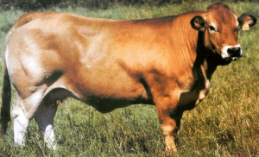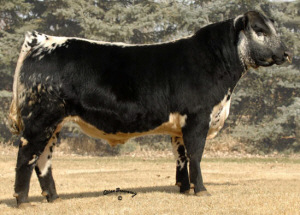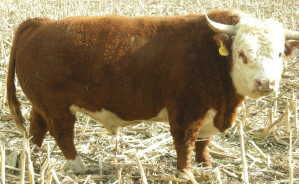



Parthenais
History
The Parthenais originated in the Centre of France, around the borders of Brittany to the Charente Basin, it is said to be one of the oldest french breeds with records going back to the beginnning of the Century. This breed provided good quality milk which was used to produce butter and they were also used for draught work.
The French Parthenais Herdbook, established in 1893, is one of the oldest in France. In 1970, the breed society established a program of breed improvement with particular emphasis on the production of high quality beef.
Today, herds are managed in the classic suckler system because of their beefing qualities (carcase yield, net yield, fine bone structure and beef tenderness).
Characteristics
 Photo courtesy of The British Parthenais Cattle Society, www.parthenais.co.uk |
Fullblood cattle are well framed, double-muscled (not as large as the Belgian Blue) and have a high muscle-to-bone ratio. For example purebreds will dress out over 67% while fullbloods cut out at over 77%. French government statistics show Parthenaise to be highly productive, fertile producers of high quality, lean meat.
Fertility, regularity and ease of calving, and hardiness of calves are all excellent, with the result that productivity is very high, both numerically and by weight, furthermore the maternal qualities and milk yields of Parthenaise cows ensure that their calves grow well. Calving surveys reveal that 94% of fullbloods are unassisted, another survey found 28% require slight assistance and 66% require no assistance at all.
The Parthenais thrives on all types of terrain and can cope with differing climatic conditions and has very good disease resistance. They have great mobility and thriftiness.
Statistics
Comparative
Distribution
 Photo courtesy of The British Parthenais Cattle Society, www.parthenais.co.uk |
References (the above information was cited from the following sites)
www.parthenais.co.uk
www.parthenaise.fr
www.parthenaiscattle.org
The Irish Parthenaise Cattle Breed Society


